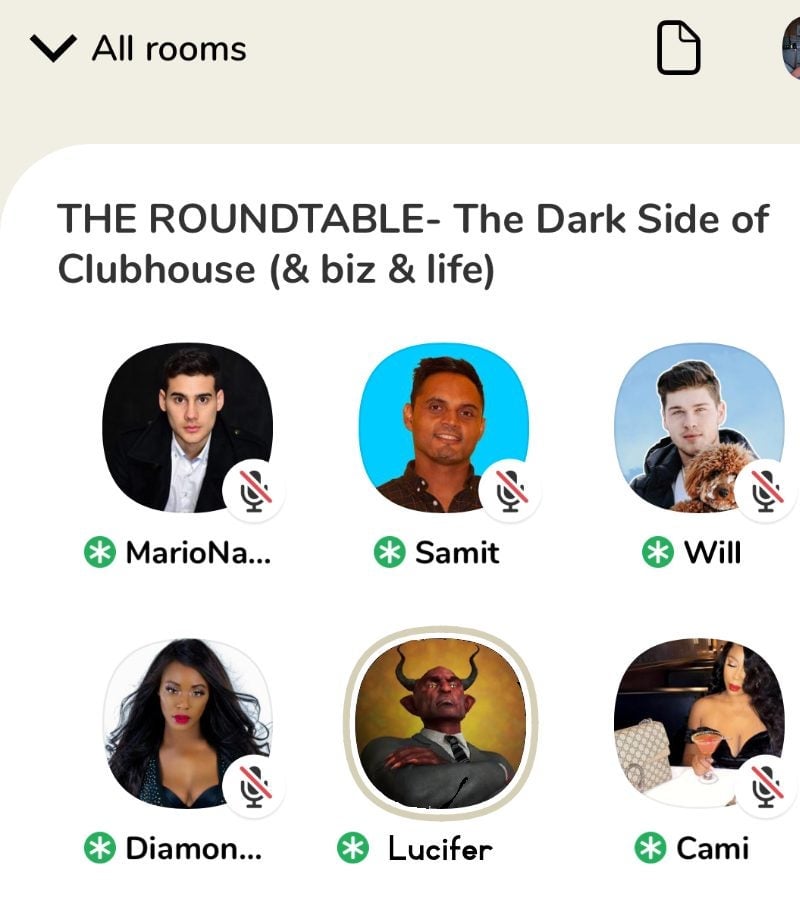A Clubhouse guide to running the worst meeting ever
The conference call wasn’t exactly a beloved feature of corporate life before the pandemic. So it’s a bit ironic that Clubhouse, the buzzy new app that essentially facilitates conference calls between internet strangers, is now exploding in popularity.


The conference call wasn’t exactly a beloved feature of corporate life before the pandemic. So it’s a bit ironic that Clubhouse, the buzzy new app that essentially facilitates conference calls between internet strangers, is now exploding in popularity.
Clubhouse rooms are run by volunteer hosts and moderators, which gives users a unique chance to hold panel discussions, Q&As, talk radio-style call-in shows, and a wide array of other conversations that would otherwise never come together or draw an audience. It also means most hosts don’t have much experience keeping a conversation from flying off the rails.
There’s a lot of literature out there about running a great meeting, much of which Clubhouse moderators could look to for tips. But what of the lessons the corporate world might glean from the freewheeling, chaotic conversations on Clubhouse? Here’s an essential guide to running a very bad meeting.

Set no agenda
Agendas keep meetings focused on the core issues that everyone showed up to discuss. If you must set an agenda—like, say, “Bitcoin only,” “Ask me anything about business while I work out” or “Vegetable Erotica 🍆”—give speakers wide latitude to veer off into unrelated tangents. This is the single most effective way to derail a meeting: Anyone walking in after a few minutes of rambling, self-indulgent asides would have no idea that you had ever set out to discuss bitcoin, business, or vegetable erotica in the first place.
Make it unclear who’s in charge
Take full advantage of the bystander effect by giving many people roughly equal power and responsibility for keeping the conversation on track. This will ensure no one feels fully empowered to step in when the group gets sidetracked—or better yet, will set up internecine skirmishes for control among co-equal moderators.
Let men steamroll women
You won’t need much help on this one—it’s a universal phenomenon. But if you need inspiration, take the example of a recent Clubhouse room, appropriately titled “Clubhouse is Broken.” After a discussion of the app’s faults devolved into two hours of bickering among the assembled influencers, a woman moderator attempted to reset the conversation: “If I can cut in here, guys,” she said, “I think we need to get back on—.” Two men began speaking, and the room descended into confused crosstalk for several seconds until one of them emerged victorious, still talking after everyone else had given up. “Guys,” he said, “I really think we need to get back on track here.”
Let loose cannons fire away
In many meetings, someone will be tempted to hijack the agenda to discuss their personal bugaboo. Let ‘em rip!
Assemble the wrong group of people
Any meeting will be doomed from the start if the team you’ve gathered doesn’t have the right expertise to tackle the challenge they’ve gathered to discuss. Take the example of a well-meaning group of scientists who recently assembled on Clubhouse with the noble goal of answering any listener’s science questions. Unfortunately, the listeners were mostly curious about areas none of the scientists studied, leading them to demur on question after question because they didn’t have the right backgrounds to fully answer them.
Don’t do your homework
Whether you’re hosting a Clubhouse room, a business meeting, or a conference panel, nothing sets participants up for failure faster than not knowing exactly who they are. This principle was on full display in a recent Clubhouse discussion of Covid-19, in which the host welcomed a speaker he had recruited for a panel by saying: “Lydia is here! That’s great. Well, Lydia, I know you’re a, um, physician, but…well, perhaps it would be better if you introduced yourself.” Lydia was, in fact, a researcher studying immunology, and her afternoon on the panel was not off to a great start.
Clubhouse shows the immense promise of an app that invites users to listen to people they otherwise might never hear from, and to communicate with all the expressive nuance of a live human voice. And, to be fair, some rooms are incredibly well-run: The gold standard in my experience of Clubhouse was a room called “Muslim men, come get your trash ratings.” It was hosted by about a dozen Muslim women who invited men onstage one by one to ask probing questions about their views on masculinity, feminism, and gender roles in the context of Muslim life—and then roasted the men in proportion to their level of chauvinism. The format yielded insightful conversations and many inspired barbs.
But, as is the case whenever assembling a group of humans, if you don’t set up strong guardrails most meetings will descend into chaos. Clubhouse’s recent moderation initiatives may help them curb the worst excesses of that chaos—harassment, hate speech, and disinformation—but on Clubhouse, in conference rooms, and across virtual meetings, it will always fall to a few brave moderators to save their fellow humans from their fractious, disorderly, easily-distractible nature.